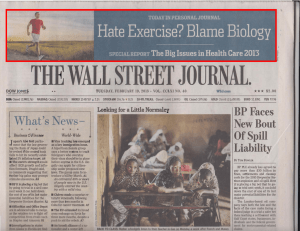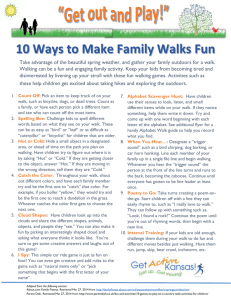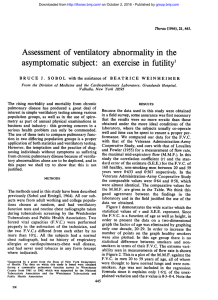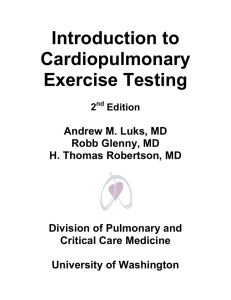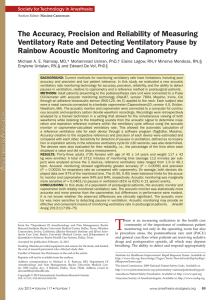Updai Health I PERSONAL BES
advertisement
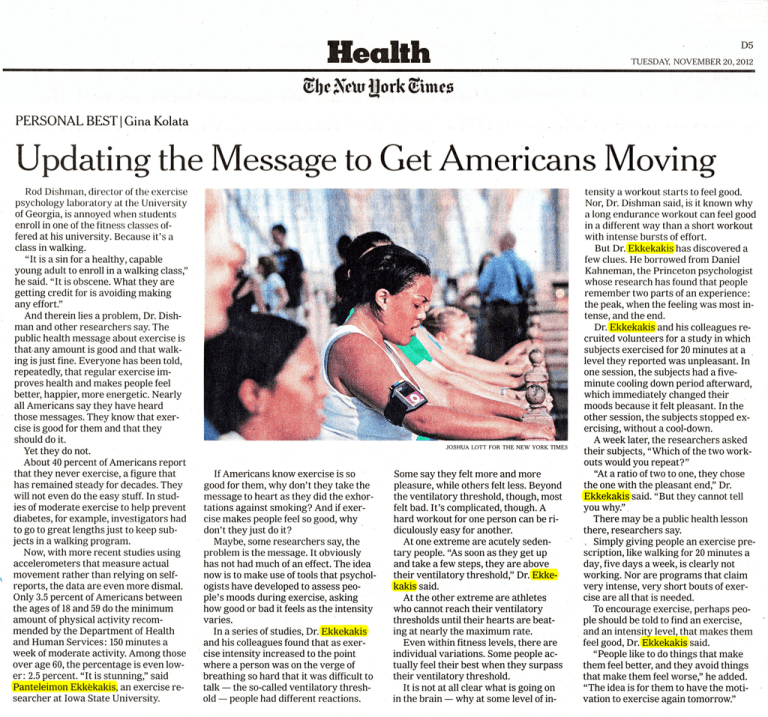
Health 05 TUESDA~ NOVEMBER 20,2012 PERSONAL BES IGina Kalata Updai o I i 'I ) an, iii t r psycholo gy l' r' t ry : t. of Georgia, is annoy I wi enroll in one of the fitn I fered at his university. Becau class in walking. "It is a sin for a healthy, capable young adult to enroll in a walking class," he said. "It is obscene. What they are getting cre dit for is avoiding making any effort." And therein lies a problem, Dr. Dishman and othe r re searchers say. The public health message about exercise is that-any amount is good and that walking is just fine. Everyone ha s been told, repeatedly, that reg ular exercise improves health and makes people feel better, happier, more energetic. Nearly all Americans say they have heard those messages. They know that exercise is good for them and that they should do it. Yet they do not. .About 40'percent of Americans report that they never exercise, a figure that If Americans know exercise is so has remained steady for decades. They good for them, why don't they take the will not even do the easy stuff. In studmessage to heart as they did the exhories of moderate exercise to help prevent tations against smoking? And if exerdiabetes, for example, investigators had cise makes people feel so good, why to go to great lengths just to keep sub don't they just do it? jects in a walking program. Mayb e, some researchers say, the Now, with more recent studies using problem is the message. It obviously accelerometers that measure actual has not had much of an effect. The idea movement rather than relying on selfnow is to make use of tools that psycholreports, the data are even more dismal. ogists 'h ave developed to assess peoOnly 3.5 percent of Americans between ple's moods during exercise, asking the ages of 18and 59 do the minimum how good or bad it feels as the intensity amount of physical activity recomvaries. mended by the Department of Health In a series of studies, Dr. Ekkekakis and Human Services: 150 minutes a and his colleagues found that as exerweek of moderate activity. Among those . cise intensity increased to the point over age 60, the percentage is evenlow- . where a person was on the verge of er: 2.,5 percent. "It is stunning," said breathing so hard that it was difficult to Panteleimon Ekkekakis, an exe rcise re talk - the so-called ventilatory threshsearcher at Iowa Stat e Univers ity. old - people had different re actions. JOSHUA LOTT FOR THE NEW YORK TIMES Some say they felt more and more pleasure, while others felt less. Beyond the ventilatorythreshold, though, most felt bad. It's complicated, though. A hard workout for one person can be ridiculously easy for another. At one extreme are acutely sedentary people. "Assoon as they get up and take a few steps, they are above their ventilatory threshold," Dr. Ekkekakis said. At the other extreme are athletes who cannot reach their ventilatory thresholds until their hearts are beating at nearly the maximum rate. Even within fitness levels, there are individual variations. Some people actually feel their best when they surpass their ventilatory threshold. It is not at all clear what is going on in the brain - why at some level of inI t I i y w rl it s t rt N r, r. i hrn: n id, i' it known why I n ndu r nc workout can feel good in diff r nt way tha n a short workout with int n bursts of effort. But Dr. Ekkekakis has discovered a few clues . He borrowed from Daniel Kahn eman, th e Princeton psychologist whose re sea rch ha s found that people remember two parts of an experience: the peak, when the feeling was most intense, and the end. Dr. Ekkekakis and his colleagues recruited volunteers for a study in which ' subjects exercised for 20 minutes at a . level they reported was unpleasant: In one session, the subjects had a fiveminute cooling down period afterward, which immediately changed.their moods because it felt pleasant. In the other session, the subjects stopped exercising, without a cool-down. A week later; the researchers asked their subjects, "Which of the two workouts would you repeat?" "At a ratio of two to one, they chose the one with the pleasant end," Dr. Ekkekakis said. "But they cannot tell you why." . There may be a public health lesson there, researchers say. \ Simply giving people an exercise prescription.Iike walking for 20 minutes a day, five days a week, is clearly not working. Nor are programs that claim very intense, very short bouts of exercise are all that is needed. To encourage exercise, perhaps people should be told to find an exercise, . and an intensity level, that makes them feel good, Dr. Ekkekakis said. "People like to do things that make them feel better, and they avoid things that make them feel worse," he added. "The idea is for them to have the motivation.to exercise again tomorrow."



